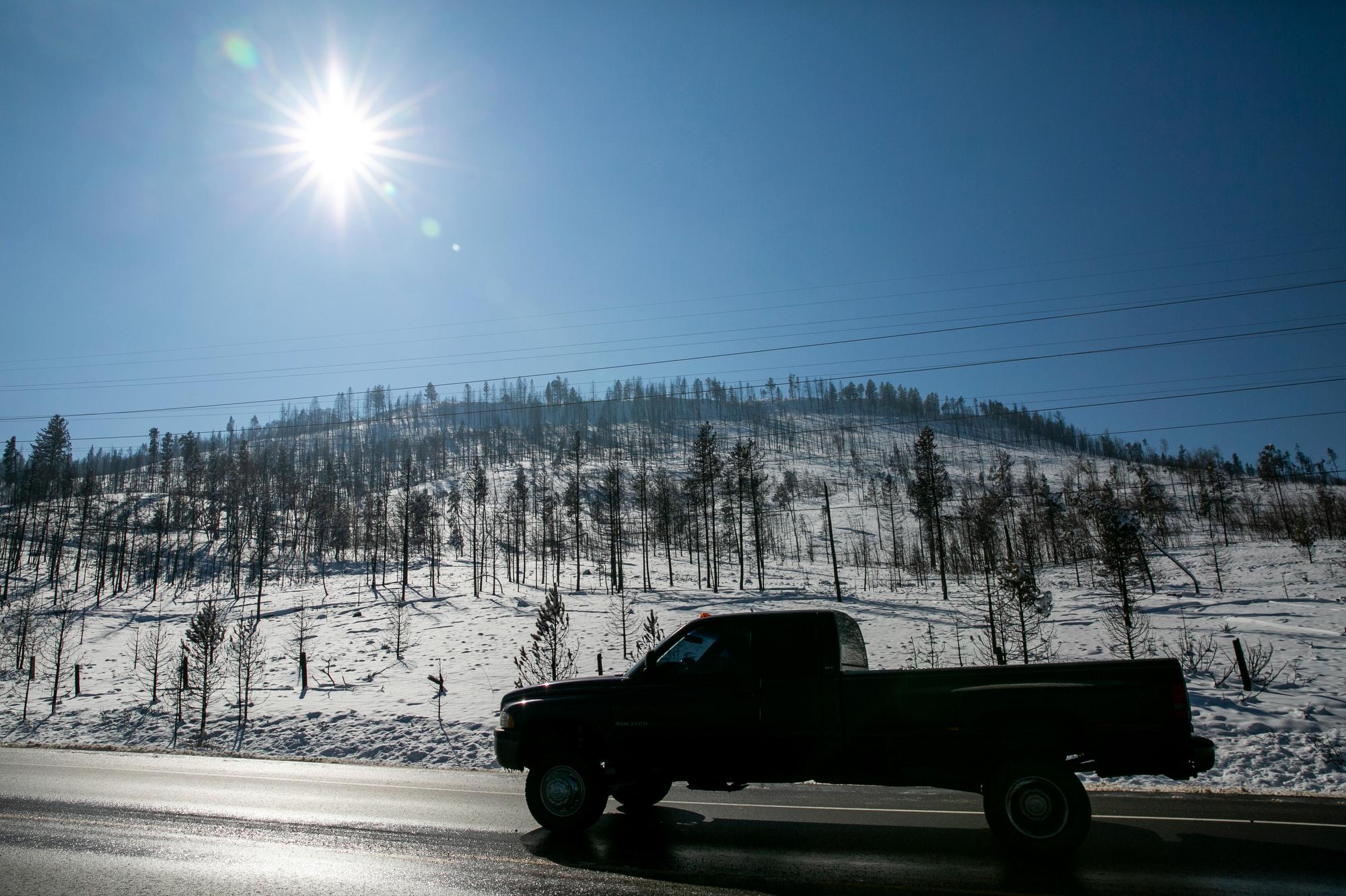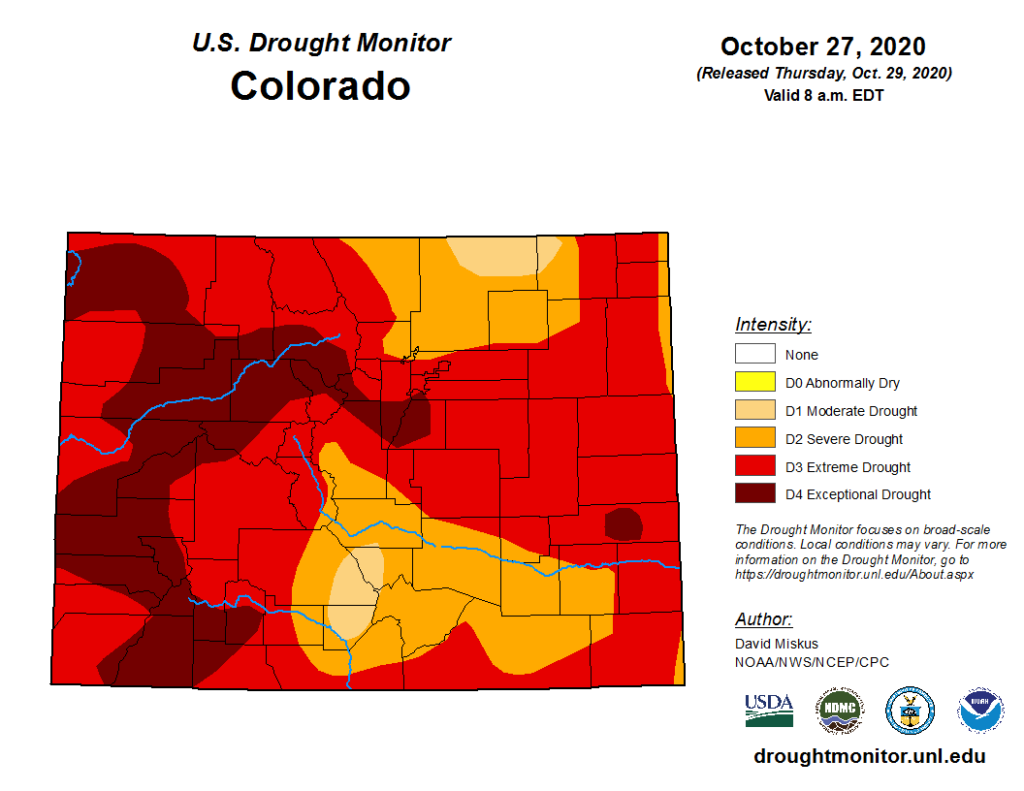
A recent October snowstorm blanketed Colorado with much-needed moisture, helping calm the state's two largest wildfires in recorded history— though both still burning in and around Rocky Mountain National Park.
The snow also kept the state's record drought from getting worse. But a single storm won't significantly help much with conditions this bad.
"Those sorts of precipitation amounts don't put that big of a dent into the big deficits we built up through the summer," said Russ Schumacher, the state climatologist. "It's great to see a lot of moisture in a lot of places from this storm, but we need a lot more storms like this to really get out of this drought situation."

According to the U.S. Drought Monitor, more than 75 percent of the state is in extreme drought, with nearly 22 percent in exceptional drought — the monitor's most severe drought category.
Schumacher said the climate station near Grand Lake, where the East Troublesome fire has destroyed homes and killed at least two people, recorded the area's driest July through mid-October on record "by far."
Any improvements to the U.S. Drought Monitor map will likely be gradual, Schumacher said. Unfortunately, the forecast shows temps will warm back up to above-average numbers, and there's no immediate additional snow.
"The longer term outlooks don't look especially promising for the winter either," Schumacher said, since the current La Niña weather pattern usually means less snow and warmer conditions for the southern half of Colorado.









